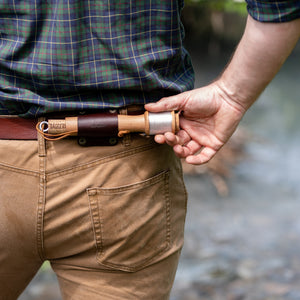How to Pack a Backpacking Bag So It’s Easier to Carry
A heavy, lumpy backpack can put a damper on any hiking trip. There are few things more irritating than shoulder straps that dig into your skin, items that bump against your back when you walk, and compartments that are so haphazardly stuffed with equipment that the item you need has become impossible to find.
Often, the inconveniences associated with backpacking stem from individuals being unaware of how to pack a backpacking bag correctly. Fortunately, with a little practice, developing a smart packing routine is relatively easy.
Take a look at the tips below to learn more about how to pack your backpack in preparation for your upcoming hike.
How to Pack a Backpacking Bag
There’s an art to packing a backpacking bag for a hike. As simple as it sounds, the process does not involve stuffing everything into the compartments without a care. There are a couple of things to consider when determining how to pack a backpacking bag.
Weight Distribution
If you’re going to be hiking in somewhat rugged terrain, it’s a good idea to pack your lightweight backpack with the lighter materials toward the bottom and the heavier materials towards the top. However, if some of your lighter items are delicate and might be damaged by heavier items, they’ll be safer in an outer pocket.
Keeping the lighter content at the bottom of your bag and the heavier content at the top can help you keep your center of gravity balanced. This way, you’re less likely to fall if the terrain is uneven.
Outer Pockets
Make use of your bag’s outer pockets when you’re preparing a lightweight backpack for day hiking. You’ll want to store the items you may need in a hurry, and tools you plan to use repeatedly throughout your hike. For example, if you’re planning to fish during your hike, keeping your fishing kit in an outer pocket will make it much easier to find.
Additionally, if you are carrying a first aid kit (and you should be), keeping it in an outer pocket ensures that you will not have to dig through all of your supplies to find it when in need.
Compression
Carrying bulky items can make efficient packing difficult, but if you’re able to compress any of these items, you’ll be able to fit the things you need into a lightweight backpack.
If you’re carrying a coat or a sleeping roll, use a compression bag to reduce the amount of space these items claim in your backpack.
Using Space Efficiently
There isn’t a single right way to pack a lightweight backpacking backpack, but there are a couple of things you can do to ensure that you’ve packed your supplies to the best of your ability.
For one, it’s important that your backpack is comfortable once everything has been tucked inside. If items are poking you in the back through the fabric, or the weight distribution interferes with your balance, some changes will need to be made.
Experiment for a while to discover the best way to organize your supplies before you embark on your hiking trip. Try your packed bag on and walk around to gauge how comfortable it is to carry, and make sure that there’s nothing loosely shaking around inside. A well-packed backpack should be compact and secure.
It’s also a good idea to think about how you plan to use your supplies during the trip. As mentioned above, pack emergency items and those you’ll use frequently in the outer pockets. From there, pack larger items that you’re going to use first toward the top of your backpack. Items that won’t get a lot of use should be closer to the bottom.
If you’re still in the process of purchasing supplies for your hike, consider the size and weight of what you’re looking for. If you can, buy items that are designed for lightweight backpacking, like this compact grill. Space-saving tools and equipment can help make packing a lot easier.
Keep in mind that these tips should be considered general guidelines rather than concrete rules. Packing methods can be modified so that you can best accommodate the load you’re carrying. The most important goal in effectively storing your equipment in a lightweight backpack is your comfort and safety throughout the hike.



















